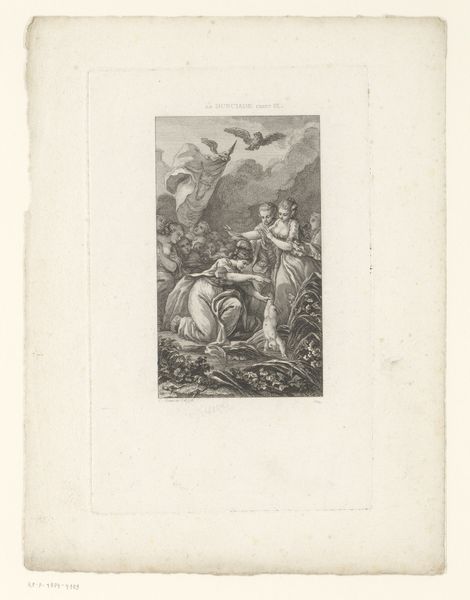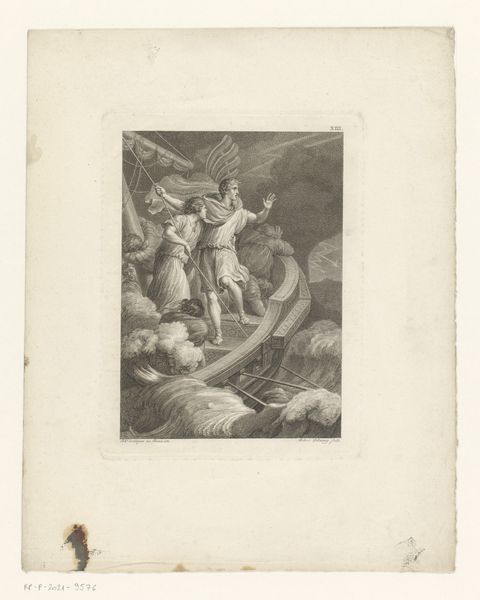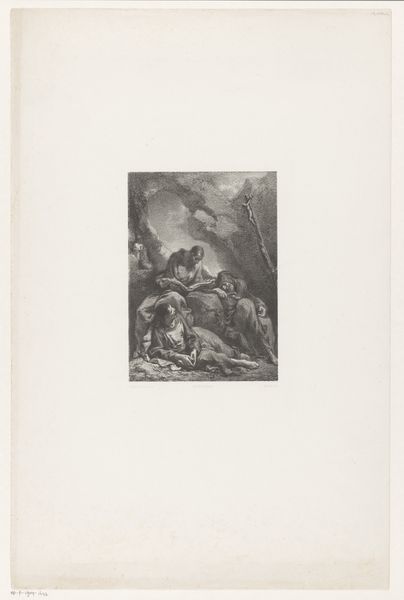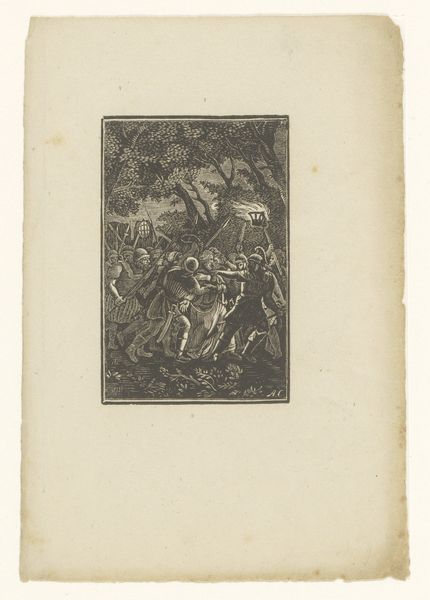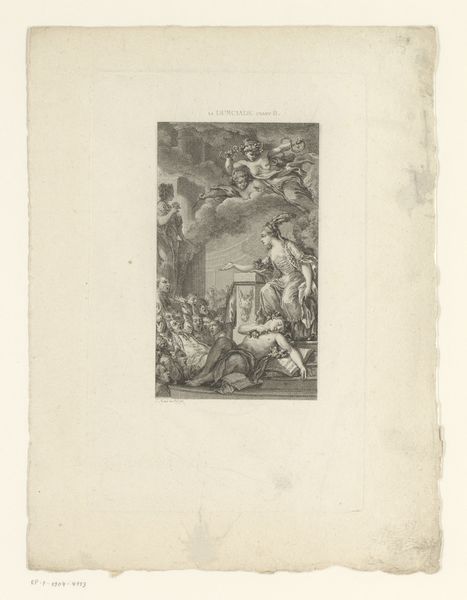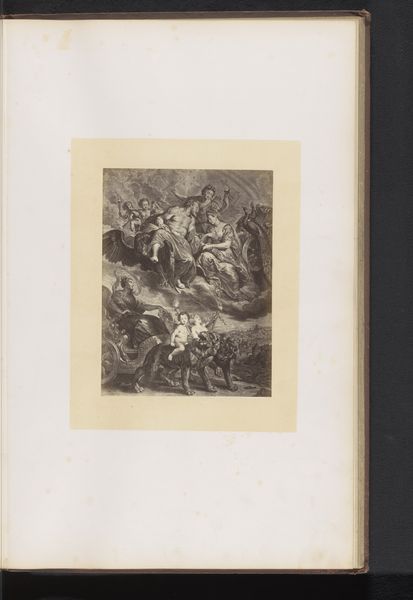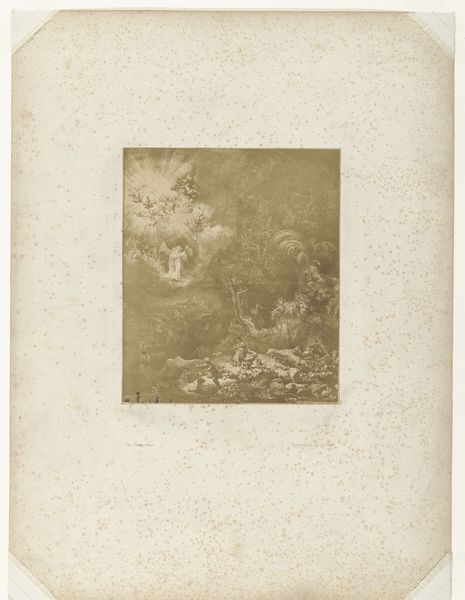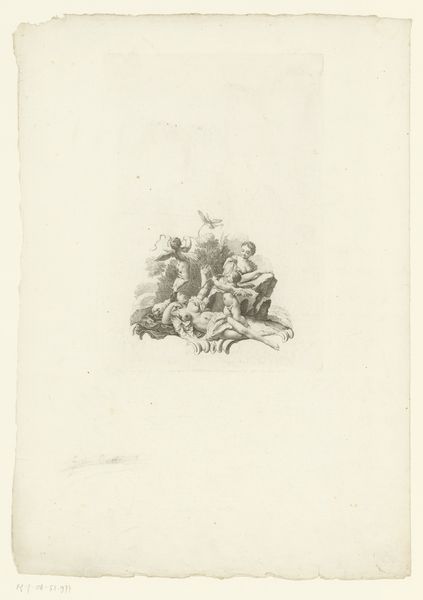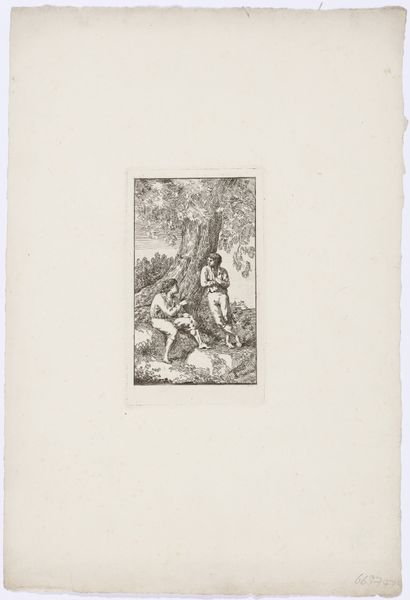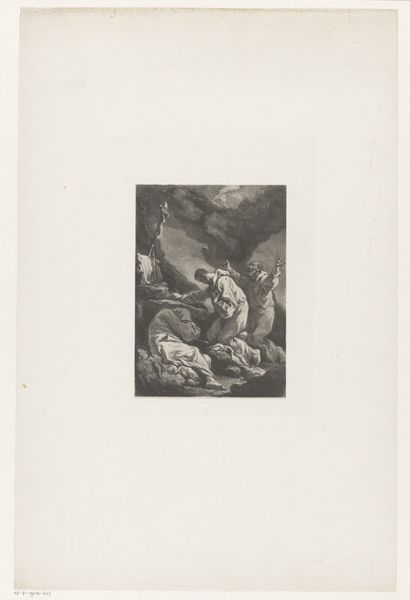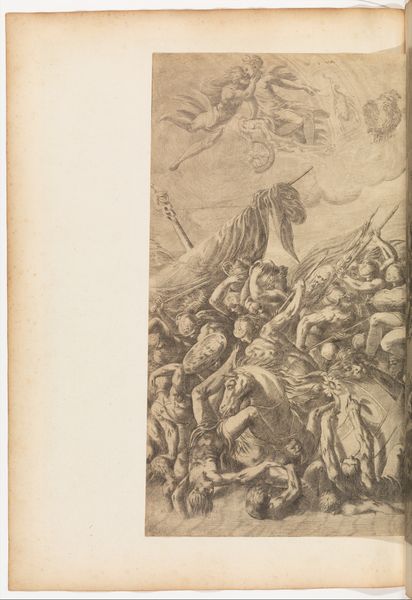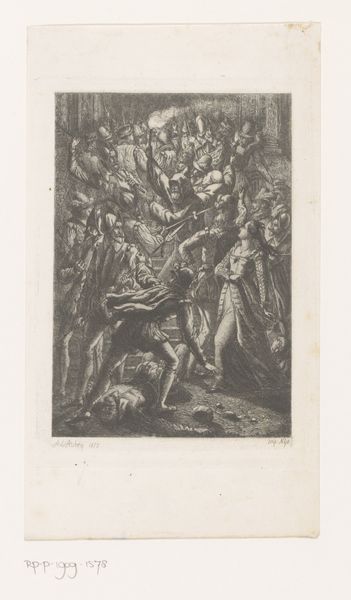
Scène uit een gedicht met een man die een boek in het vuur wil gooien 1776 - 1800
0:00
0:00
anonymous
Rijksmuseum
print, paper, engraving
#
allegory
#
narrative-art
# print
#
figuration
#
paper
#
form
#
line
#
history-painting
#
academic-art
#
engraving
Dimensions: height 232 mm, width 147 mm
Copyright: Rijks Museum: Open Domain
Curator: This engraving, made between 1776 and 1800, is titled "Scène uit een gedicht met een man die een boek in het vuur wil gooien," which translates to "Scene from a poem with a man who wants to throw a book into the fire." The artist is currently unknown. Editor: It's stark, isn't it? The high contrast between the figures and the background, the flames licking up...there's an intense drama to it, a sort of theatrical fury. Curator: The intensity resonates with larger political shifts in this era. Book burnings throughout history often symbolize the suppression of knowledge and dissent, reflecting deeper ideological struggles of power. Who gets to control narratives, and how? These questions are perpetually relevant. Editor: That act of destruction is obviously key. But look at the symbolism used: that woman ascending amid cherubs feels very classical, like an idealized allegory. A counterpoint to the harshness down below? Is that woman truth emerging, a new philosophy born from the literal ashes of discarded thoughts? Curator: Or perhaps representing something darker. Considering that period was marked by colonialism and shifting societal hierarchies, are we to believe that those ascendant figures could represent ideas that perpetuate oppression, silencing marginalized voices under the guise of enlightenment? What perspectives were purposefully discarded to benefit a select few? Editor: The fire immediately makes me think of cleansing. But from whose perspective? Perhaps it signifies an attempted rejection of old orders, though violent in its manifestation, suggesting that those in positions of power will reject the written word for fear of the written word will somehow disempower them. Curator: It's important to think about accessibility. In our time of digital information, the intentional burning of literature feels acutely charged. Whose access is blocked? What dialogues are intentionally destroyed? Even in what seems to be art depicting an historical event can have relevance for understanding our present challenges. Editor: The longer I look, the more nuanced this seemingly simple print becomes. It compels you to dive beneath the surface. Curator: Indeed. By grappling with uncomfortable elements in artworks such as these, it can provide some illumination on ourselves.
Comments
No comments
Be the first to comment and join the conversation on the ultimate creative platform.

